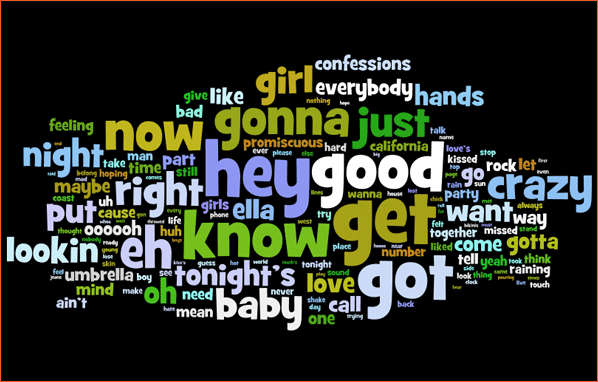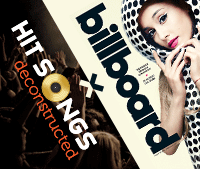Hit Songs Deconstructed and Billboard collaborated on the following article which focuses on how the top hits of summer are crafted by songwriters, marketed by the labels, and why they connect with the listener.
The on-line version was published on Billboard.com on August 15th. The print version appears in the Aug. 23rd issue of Billboard magazine.
While “Problem,” “Fancy” and “Rude” vie for the position of 2014’s Song of the Summer, we got to thinking about the previous decade of smash hits — from 2003’s “Crazy In Love” to 2013’s “Blurred Lines” — to earn the No. 1 Song of the Summer distinction.
What does it take for a regular ole No. 1 hit to become the summer’s defining song? And what do these elite tracks have in common? In conjunction with Hit Songs Deconstructed, Billboard took a note-for-note look at each summer’s top song from 2003 to 2013 to see what quantitative similarities these hits share.
After wading through 10 years of killer riffs, anthemic choruses and inescapable melodies, here’s what the numbers tell us about the summer’s top-ranking songs. (For more on the battle for summer song supremacy, check out our in-depth feature in the current issue of Billboard.)
5 Things You WILL Hear on a No. 1 Summer Hit
Pop or R&B: Come summer, people gravitate toward two genres — pop and R&B. Fifty-five percent of No. 1 Summer Songs are predominantly pop, and the other 45 percent are mainly R&B. That’s not to say other elements — from rock to electropop to funk — don’t work their way into the mix, just that these two genres rule when the sun shines. Speaking of influencer genres, 100 percent of all No. 1 summer hits from the last decade include elements of dance music.
Lyrics About Relationships or Hooking Up: From the serious (Mariah Carey’s “We Belong Together”) to the libidinous (Nelly Furtado’s “Promiscuous”), summer songs, like many hit songs, tend to fixate on things that make your heart go faster. Forty-five percent of the songs were about love/relationships, and 27 percent were about hooking up.
The Same Words, Over and Over: Many critics complain about simplistic lyrics in pop songs. And while there are plenty of counterexamples, they’re not to be found in the reigning songs of the summer. Words like “hey,” “crazy,” “good,” “got,” “get,” “gonna,” “baby” and “eh” recur in these songs. Unsurprisingly, “girl” pops up far more often than “boy.” And every single one of the No. 1 summer songs includes the word “know.” You know? 

Synths: Long live the ’80s! While the top summer songs aren’t exactly Depeche Mode outtakes, 73 percent of them include a synth within the instrumentation.
A Mix of Male & Female Voices: Songs featuring male and female vocals accounted for 55 percent of summer hits. Solo female songs made up 27 percent of the roster.
5 Things You WON’T Hear on a No. 1 Summer Hit
Lengthy Song Titles: Zero songs of the summer have titles with more than five words, and only one song had a four-word title. Most summer No. 1s have three-word names, so don’t expect a summer No. 1 from Panic! at the Disco in the near future.
All Male Vocals: Only two of the 10 No. 1 summer hits are lady-less. “Confessions Part II” is just Usher while “Blurred Lines” is Robin Thicke, T.I. and Pharrell.
Piano and Strings: While synths pop up in 73 percent of these songs, piano and strings are far scarcer in summer chart-toppers. Piano instrumentation occurs in only 18 percent of summer hits, and the same goes for strings. “Call Me Maybe” is the rare summer No. 1 that features prominent strings.
Anything Less Than Three Minutes: The average summer No. 1 is 3:55, with the Black Eyed Peas’ “I Gotta Feeling” running the longest at 4:49. None of the No. 1s are less than three minutes — Katy Perry’s “I Kissed a Girl” is the shortest song on the list at 3:00.
A Tardy Chorus: Forty-five percent of the Summer No. 1 hits reach the chorus within the first 20-39 seconds. Eighty-one percent of the songs hit the chorus before the one-minute mark. “We Belong Together” doesn’t arrive at its chorus until the 1:03 mark.
This post is based on research conducted in conjunction with Hit Songs Deconstructed for an article in the Aug. 23rd issue of Billboard.



